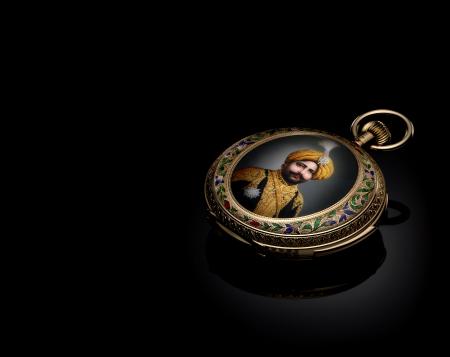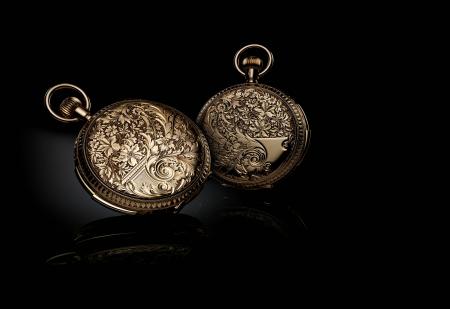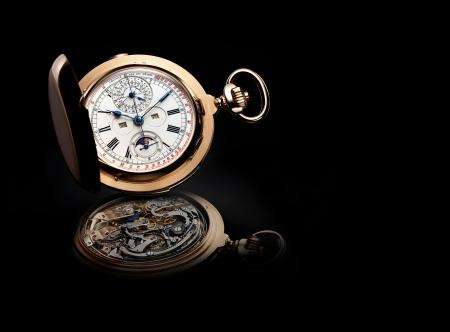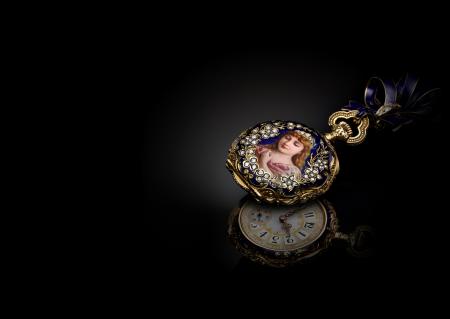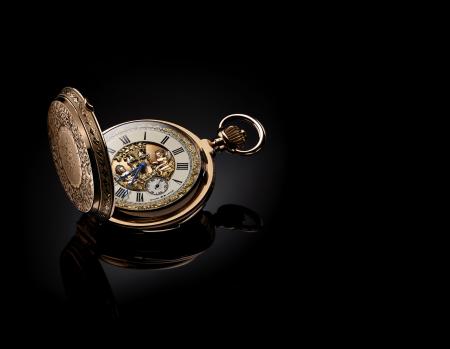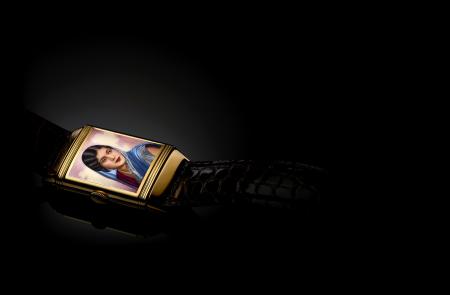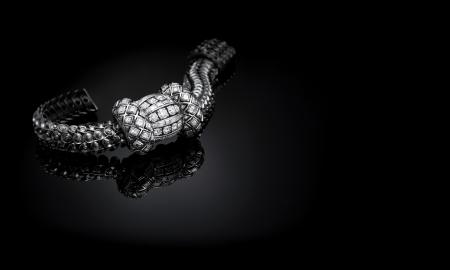The Jaeger-LeCoultre Heritage
By MyWatch
Ten exceptional watches selected from among the historical models of the Jaeger-LeCoultre Heritage showcase the handcrafted expertise and creative freedom of the Manufacture. These timepieces highlight the mastery in the field of Rare Handcrafts of which the House has been the loyal custodian for over 180 years. From past to present, as testified by the new Hybris Artistica collection clearly embodying this ancestral know-how, the ‘skilled hands’ perpetuating this art at Jaeger-LeCoultre do so with full respect for traditional Swiss Haute Horlogerie.
Above and beyond its role as an instrument for reading off and measuring time, a Jaeger-LeCoultre is a fascinating invitation to embark on a journey. Whether just created or belonging to the heritage collection of the Manufacture, and whether simple or complex, its heart and body harbour an exceptional heritage that resounds with each click of its gear wheels.
For 180 years, the artisans of the Grande Maison have been cultivating their expertise, faithfully devoting themselves to reinventing it, nurturing it with venerable techniques or introducing novel methods. Past and present thus remain inextricably interwoven, as inseparable as the tandem formed by the aesthetic and technique facets of their work. Among the 40 professions exercised within the Manufacture, the talents of the Master Watchmaker are further enhanced by engraving, enamelling and gem-setting. These complementary Rare Handcrafts have been the major ornamental modes on watches since the 17th century, and are now perfectly mastered within the Jaeger-LeCoultre workshops.
Haute Horlogerie
Two one-of-a-kind creations have been chosen to embody the talent of the Master Watchmaker. Present at each stage in the development and crafting of the watch, this artisan must display a blend of technical mastery and creative sensitivity. Concern for details taken to extremes, ranging from the choice of materials to the art of decoration and miniaturisation, endows each timepiece with a degree of precision backed by aesthetic perfection.
Antoine LeCoultre (1803-1881), founder of the Manufacture Jaeger-LeCoultre, significantly contributed to the development of Haute Horlogerie through a number of major inventions, such as the Millionometer in 1844 or the keyless winding system in 1847. Building on the international recognition achieved by the House of LeCoultre in the field of precision and miniaturisation, Antoine’s eldest son, Elie LeCoultre (1842-1917) drove the Grande Maison to even greater heights by introducing the first horological complications produced by the Manufacture. He played an essential role in the development of the watchmaking art in the Vallée de Joux by specialising in the production of minute repeaters and chronographs from 1870 onwards, and subsequently Grande Complication models as of 1890.
The minute repeater is a Jaeger-LeCoultre speciality that calls for mastery of all watchmaking techniques, as well as those of metallurgy as applied to the gongs together with resonance and sound propagation effects. Having produced 200 different repeater calibres today, Jaeger-LeCoultre continues to play an active part in the development of this complication that is one of the rarest in the watch industry. When combined with a chronograph and a perpetual calendar, a minute repeater becomes a Grande Complication. Only lengthy training and a wealth of experience can enable a watchmaker to assemble such an instrument.
Circa 1895. Grande Complication – LeCoultre Calibre 19/20RMCSQ
A tribute to 19th century Haute Horlogerie, this model combines a minute repeater with a chronograph featuring a tachometric scale, as well as a perpetual calendar. It indicates the time on a six-part Grand Feu enamel dial: the hours and minutes, day and date, months and leap-year cycles as well as the moon phases are displayed in a perfectly balanced way that accentuates the readability of the watch.
1928. Grande Complication – LeCoultre Calibre 17JSMCCRVQ
Undoubtedly one of the most prestigious models in the Heritage collection, this pocket watch is an eloquent illustration of technique enhanced by impeccable aesthetics. Its openworked dial was very modern for its time and is framed by a gold and enamel dial bearing a chapter ring with Roman numerals. The artisan also enamelled the pendant ring and the crown, two very delicate operations. The skeleton-worked dial provides ample views of the intricate workings of the mechanism driving three major complications: a minute repeater, a split-second chronograph and an instantaneous perpetual calendar.
Engraving
The first form of printing directly on matter, engraving goes back to the earliest days of human history. When applied to watchmaking, this ornamental technique provides boundless decorative possibilities. Using tools inherited from the past – burins, files and hammers – the engraving artisan gives life to the material that he hollows and shapes with unbelievable precision.
As shown by the selected timepieces, the engravings on 19th century pocket watches frequently featured plant-life and floral motifs. Inspired by Art Nouveau, the artisans performed elaborate ornamental work in the form of lilies, irises, hibiscuses and foliage artfully coiling over the backs and covers of the watches, and sometimes even across the dials and movements.
Circa 1892. Minute repeater hunter watch – LeCoultre Calibre 19/20 RMS
The finesse of the plant-life motifs bears witness to the artisan’s dexterity. The full-size engraving unfurls over the case, while leaving space on part of the cover for personalising the watch. This hand-engraved and delicately exterior conceals a minute repeater as well as a double back housing a hand-enamelled and painted erotic automaton. This creation admirably epitomises the Rare Handcrafts of the Grande Maison.
Circa 1860. ‘Secret’ ladies’ watch – LeCoultre Calibre 10CY
Entirely chased, openworked, engraved and guilloché-worked on the back, this ‘secret’ watch is an anthem to femininity. The yellow gold bracelet is made in such a way that a small ladies’ watch wound with a key can be accommodated within it. It may thus be worn as a pendant or on the wrist according to circumstances. The finely crafted workmanship extends all the way to the pendant ring that is also entirely engraved. The ingeniously articulated marquise-style bracelet is fitted with adjustable clasp, an extremely rare feature in that time.
Circa 1895. Pocket watch with jacks – LeCoultre Calibre 19/20RMS
This hunter-type watch provides an exceptional setting for its minute repeater movement with jacks. The pink gold case is finely wrought, engraved and chased with extremely slender floral motifs. A medallion provides space for a personalised engraving. The metal is first pushed back to create added volume, and then chased and satin-brushed to accentuate the raised effect. The motif engraved around the edge of the case displays a fascinating artfully wrinkled effect. The double case-back is also engraved with indications of the watch’s complications. The jacks are executed in three colours of cut-out and chased gold – white, pink and yellow – giving life to two automaton cherubs driven by a minute repeater mechanism: they each in turn strike gold bells as the hours, quarters and minutes are chimed.
Enamelling
Endowed with a timeless aura due to the enduring stability of its colours, enamel miniature painting also has great artistic value. The successive firing operations – since various colours have different fusion points – mean that the final composition of an enamelled work of art is very hard to predict. Enamelling is an art that requires absolute patience. The reproduction of a painting on a few square centimetres calls for weeks of work and concentration. Moreover, each firing involves the risk of annihilating all the work done up until that point.
Enamel is one of the rarest ancestral arts and goes back thousands of years. The first traces of enamelled objects date from the 5th century BC around the Mediterranean area, particularly on the island of Cyprus and in Egypt. The technique of cloisonné enamelling, which features enamelled segments separated by partitions, began to catch on from the 6th century onwards. Champlevé enamelling established itself in the West in the 12th century: enamels are applied to a
metal plate bearing raised ‘fields’ to which they fuse during the firing. During that same period, the use of transparent enamels became more widespread, whereas they had been opaque until that time.
Miniature enamel painting came into its own in the 18th century. Using a fine brush often comprising a single hair, the colours are applied in successive touches to a white enamel base. This technique began to spread in Switzerland, where Geneva asserted itself as the world capital of miniature enamel painting. Enamelling thus began rubbing shoulders with the watchmaking art and the encounter between these two forms of artistic expression resulted in the most refined horological creations of the 18th and 19th centuries. Enamelling is so complex to master that artisans tended to be as narrowly specialised (white base enamel, decoration, firing, flux finishing) as were the watchmakers of the time in the production of movement components.
Circa 1890. Pocket watch – LeCoultre Calibre 19/20RMS
This strikingly realistic pocket watch bears the effigy of the Maharaja of Porbandar (1867-1908). The miniature enamel portrait shows a depth of field and brilliance that highlights every detail of the painting. The yellow gold case is artfully engraved and chased, featuring a rim of vibrantly coloured enamelled flowers.
1936 – Reverso with enamelled portrait of an Indian beauty – Jaeger-LeCoultre Calibre 410
Personalised with a portrait of an Indian woman whose story remains cloaked in mystery, this model dating from 1936 is a testament to the intrinsic beauty and durability of enamel. The polychrome miniature painting, which remains as fascinatingly fresh as ever, explores the smallest details of the face, the hair and the fabric of the dress. The vivid colours are an anthem to the ornamental wealth of Indian culture. The dial is also made in Grand Feu enamel.
Circa 1900. Enamelled Lépine-type pendant watch – Calibre LeCoultre 9HPV
This yellow gold pendant jewellery watch features a ribbon-shaped mobile brooch, graced with a chased décor appearing beneath the translucent enamel. The finely crafted case decoration subtly combines the talents of the gem-setter, the engraver and the enameller. It is graced with a modelled engraving that accentuates the depth of the scrolling pattern, while the feminine miniature enamel portrait is adorned with finely set rose-cut diamonds. The chased gold dial is also embellished with opalescent enamel. Swept over by Louis XVI style hands, the chapter ring is composed of white enamel cartouches bearing blue enamel painted Arabic numerals.
Gem-setting
A luminous expression of the ties between Haute Horlogerie and Haute Joaillerie, the art of gem-setting has existed since Ancient times. Various techniques serve to highlight the precious stones and the specific nature of their cut, accentuating their radiance, their brilliance and their sparkle. The cutting performed by the lapidary highlights the colour of the stone through the interplay and number of its facets. This ancient art developed strongly in European cities during the 17th century. The rose cut, which first emerged in 1520, is shaped like a dome with a flat base and a variable number of facets. This cut, which was much in favour on 19th century pocket watches, is no longer in use today because of its relatively weak radiance. The more modern round cut appeared in the 19th century and it was in 1919 that the most widely used brilliant-cut was devised by a Belgian diamond specialist from Antwerp, Marcel Tolkowsky.
The Manufacture introduced its first gem-set wristwatches in the first half of the 1930s. In 1925, thanks to its winding crown concealed beneath the case, the Duoplan was an ideal model to be treated to a well-balanced and meticulous gem-setting. The round-shaped calibres equipped with winding crowns beneath the case were also the object of multiple artistic interpretations from the 1930s through to the 1960s.
Circa 1910. Haute Joaillerie pendant – Calibre LeCoultre 13UMPV
Entirely paved with 450 brilliant-cut diamonds totalling around 16.2 carats, this platinum pendant watch features an original and modern touch in the form of yellow gold accents on the crown, hinges and ring. The case’s cut-out honeycomb pattern designed to house the grain-set gems creates an exceptionally radiant and transparent effect. Such a finely crafted work deserved an equally beautiful mechanism: a minute repeater lies hidden beneath the gems.
1945. Wristwatch with cover –Jaeger-LeCoultre Calibre 460
This ‘secret’ watch is a full-fledged jewellery creation featuring a dial concealed beneath a perfectly integrated, delicately cambered and gem-set cover. The full-pavé platinum exterior showcases a variety of brilliant, square and baguette cuts calling for an equally varied range of setting techniques – closed, claw or channel settings – that are still in vogue today.
